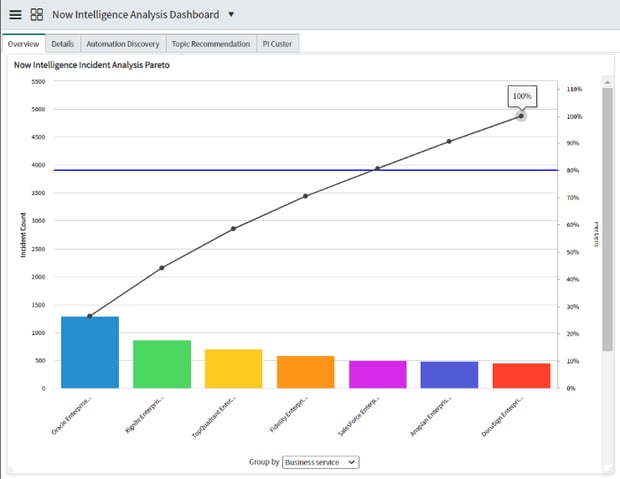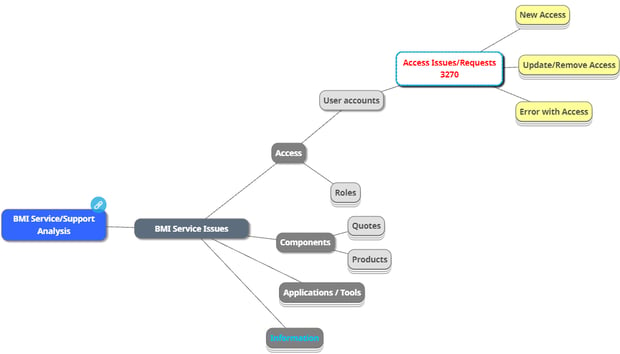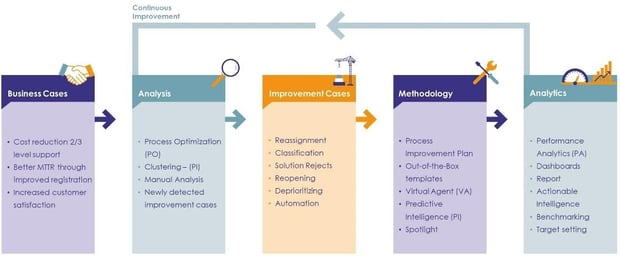Artificial Intelligence (AI) and Machine Learning (ML) have finally reached the maturity to deliver the long-awaited cost reduction and customer experience improvement in the Service Delivery world. If you’re a ServiceNow clients that owns ITSM Pro but have not activated Virtual Agent yet, the opportunity to automate your Service Desk is lying dormant in the Now Intelligence suite of solutions which include Virtual Agent (VA), Predictive Intelligence (PI), and Performance Analytics (PA).
This article reveals a low-risk approach to achieve success in your VA implementation. What you are about to discover, if leveraged appropriately, will help you massively increase your probability of success deploying VA.
ServiceNow has enabled AI and ML so your team teams do not need to become data scientists. Making those solutions deliver on their promise is a straight-forward process that any technical person can quickly learn.
Watch on-demand, “Automating Service Delivery with ITSM Pro”
But pulling together all the different pieces that go into making VA deliver its value is not as straight-forward as you might expect. Complicating this challenge is the fact that implementing an AI-driven chat-bot is not like implementing ITSM technologies which most IT pros have done many times.
The is one and only one objective that must be accomplished for VA to be successful in any organization is user adoption. The mere availability of AI, ML and the VA solution do not automatically ensure that users will adopt your VA implementation.
The experience that is delivered through the VA is the ultimate determinant of user adoption. Here is a proven approach to get it right.
First, it is useful to think of 3 levels of integration between VA and your service delivery process that must be achieved.
Level 1 addresses the ability for users to open incidents, submit catalog requests, and manage the lifecycle of all the tickets they submit. This is the easiest and most straight-forward part of the VA implementation. It can be accomplished very quickly using the OOTB functionality that comes with VA.
While it may require some adjustments depending on your service delivery environment, they should be minor. The goal here is to start migrating your user community to the VA channel doing things they are familiar with, like submitting incidents and request in other channels, and with a very low risk of having a bad experience.

Now Intelligence Incident Analysis Pareto
Level 2 relates to the development of custom topics, which when properly created, present the potential for an increased positive user experience and at the same time bring important benefits in reductions to mean-time-to-resolution (MTTR), first call resolution (FCR), and overall costs through self-service and deflection.
The holy grail of VA comes in level 3. This is where VA can deliver full automation and a seamless experience to end-users. Typically, this is a delightful experience because users can resolve issues instantly. To achieve this level requires workflow automation seamlessly integrated with VA.
To effectively deploy at levels 2 and 3 you MUST conduct a complete business process analysis of the service delivery workflows and ticket volumes to identify the services and applications that should be prioritized for level 2, via custom topic creation, and level 3 via integration to automation workflows.
The result of the business process analysis will drive the design of our custom topics. The design consists of a mind map or process flow that captures what you observe to be the way your service desk interacts with end users for each of the key services and applications that will be supported via a custom topic.

Virtual Agent Custom Topic Design
There is a structure for this design that is beyond the scope of this article. Having a structure accelerates and normalizes the way custom topics are built and ultimately impact the user experience.
If you’d like to learn more about the design structure, make sure to Watch the on-demand webinar, “Automating Service Delivery with ITSM Pro” where you’ll learn more about this plus, you’ll discover how to access video tutorials, for FREE, on this design structure topic and other key topics covering more detail than can be shared here.
The second step to successfully implementing VA is driven by the required analysis and design I just shared with you. There are two distinct types of skillsets required. Business process analysis and design call for one skillset. The other is the technical expertise required to work with VA, PA, and PI.
The mistake you want to avoid, which we see frequently, is based on the perception that because VA has tools like AI and ML that have taken out the need for data science skills and a group of OOTB components, a developer familiar with the Now platform can simply activate VA, along with its OOTB components, and expect the results that other clients have enjoyed with their successful VA implementations.
The reality is that those 2 kinds of skillsets are very different and extremely rare to be excelled at by the same person. The frequent scenario we encounter is that the platform administrator will grab a developer and activate VA. Then after a few months of fruitless efforts they get frustrated and conclude that the solution is not ready for prime time because it’s not delivering a satisfactory user experience in their initial tests.
If you recall the 3 different levels of integration and the 2 skillsets required to properly deploy at levels 2 and 3, you can understand why this approach is very likely to fail. Therefore, make sure your implementation team consists of a skilled developer familiar with your Now platform and a business process analyst that can look at your service desk interactions with end users and create the design document that conveys to the technical VA implementer the experience that VA must deliver for the end user.
Register for the recording of the webinar, “Automating Service Delivery with ITSM Pro,” to get more insights than can be shared in this article about the analysis and design requirements. Additionally, you will discover how to access video tutorials, for FREE, on this topic showing you step-by-step how to conduct your analysis and design.
The 3rd step to this low-risk approach to implement VA is the need to enter this project with a clear commitment to employ a continuous improvement process. VA is a solution that is delivering value to your consumers. The requirement to be monitoring and tuning its performance is unavoidable. It can only be done properly applying a continuous improvement process that uses the other tools made available in Now Intelligence, like PA and the Continuous Improvement Module (CIM).

Continuous Improvement Model for Now Intelligence
This is one solution where you can’t ignore or pay lip service to continuous improvement. To do so, is to virtually guarantee that your VA adoption will fail even if it is off to a good start because you made use of the previous 2 little known secrets shared previously.
Make sure to register for the webinar, “Automating Service Delivery with ITSM Pro,” to get more insights than can be shared in this article about the continuous improvement approach that works for VA. Additionally, you will discover how to access video tutorials, for FREE, showing you step-by-step how to set up your continuous improvement process around VA.
